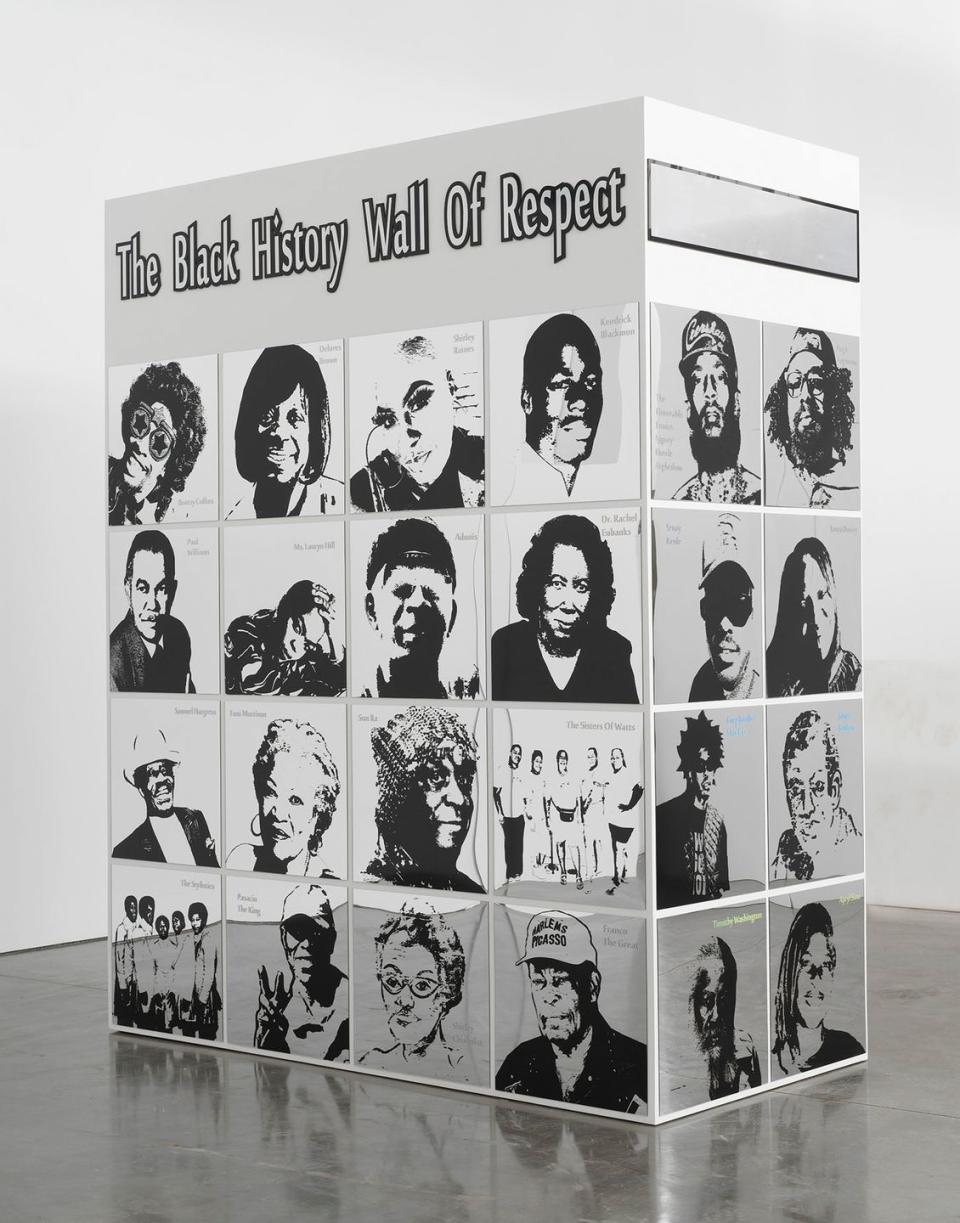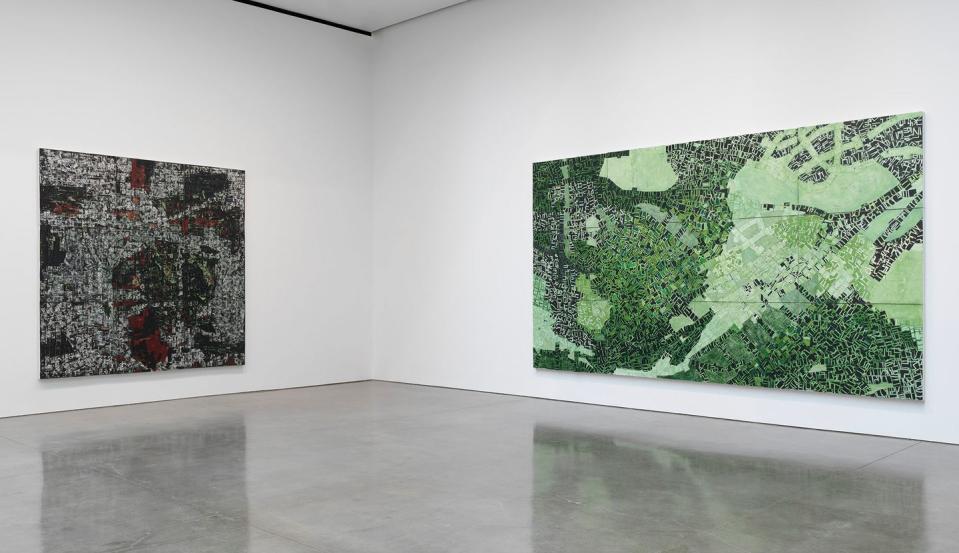Can Art Spur Social Change? A New Show at Gagosian Says ‘Yes’

- Oops!Something went wrong.Please try again later.
- Oops!Something went wrong.Please try again later.
Artist Linda Goode Bryant teamed up with architecture firm Diller Scofidio + Renfro for Are we really that different? an indoor urban farm that addresses food access.
Beginning in the 1970s, Swiss artist Joseph Beuys took a radical new idea out for a spin. He called it “social sculpture,” a medium that existed at the intersection of performance and participation, where anything could be art and anyone could be an artist. Beuys’s concept manifested in works like “7000 Oak Trees,” a five-year project beginning in 1982 to plant 7,000 trees in Kassel, Germany.

Artists, particularly during the 1990s, expanded on these theories and increasingly borrowed from fields like architecture, urban planning, and activism to create engaging new work commonly referred to as “social practice.”
Gagosian is revisiting community-oriented art once again, but through a distinctly Black lens. Curated by gallery director Antwaun Sargent and featuring a multidisciplinary lineup that includes Chicago-based artist Theaster Gates, filmmaker Linda Goode Bryant, Los Angeles artist Lauren Halsey, painter and organizer Rick Lowe, and architect David Adjaye, among others, “Social Works” locates community simultaneously in the abstract and the very physical: from Lowe’s large-scale paintings and collages on canvas to Adjaye’s first large-scale sculpture, Asaase (2021), a labyrinth of rammed-earth walls that visitors can actually walk through.
ELLE DECOR sat down with Sargent to talk about how Black artists today are utilizing space as a community-building tool.

ELLE DECOR: Why this exhibition in this moment?
Antwaun Sargent: The past year has been incredible in terms of helping us rethink our relationships to all sorts of spaces for a variety of reasons, but I stress that these artists exist in a lineage and a history. While some folks may have woken up to certain disparities a year ago, that has long been a part of the realities facing certain communities that these artists are coming from, and they’ve long negotiated that and done that work within their art practices. [The show] feels like it was made for this moment in some ways, and it is, but it’s also about acknowledging the longer-term engagement, and the labor and work of several generations of artists. This is a show that questions what social practice is and situates that in an intergenerational exchange.
ELLE DECOR: The works raise some really interesting points about the division between personal and public space. Lauren Halsey’s work with graffiti comes to mind—something that exists in public space but isn’t legible to everyone. It really highlights that disconnect between intention and interpretation, and I’m curious about the material effects that can have on communities.
AS: One of the things that is important in Lauren’s practice is this idea of thinking about the community from inside the community. When you consider the paintings in the exhibit and the vernacular signage and architecture that she brings into her practice, you think, Why haven’t those forms of making and designing been historically valued? People are making this kind of work and navigating space in this way—why can’t that be a part of the way that the community is revitalized or developed?

These vernacular uses of paint in the communities in L.A. where she lives are looked over as if they’re not worthy, not creative, not design. [Lauren’s] called this sort of work “FUBU” architecture, “For Us By Us” architecture; the spirit in which she creates is about Black empowerment though the imaginations of Black people.

ELLE DECOR: You also see similar lines of thinking in Rick Lowe’s exploration of “domino culture” (the social and community connections that come about through the game), that these Black ways of using space are not valued.
AS: What I love about the show is that there are all of these connections, but you don’t necessarily see them because they’re not one-to-one. So Rick is thinking about domino culture and he’s doing that through abstraction, and Lauren is processing similar thoughts through figurative installation. The languages are different, but they’re thinking about some of those same questions of the kind of lineages we choose to pave over.

ELLE DECOR: What do you see as the takeaway for white audiences versus Black audiences?
AS: The hope is that people will reflect on how they’re engaging the space and what privileges or prejudices happen or are enacted on them as they move through the space. That’s inherent. My primary concern, in terms of the audience, was thinking through the way that audiences can experience an exhibition—so you don’t just have a painting on a wall, you have sound that you may dance to, you have sculpture that you move through, you have a farm that you may take food from. You’re asked to do some of the work with your body in this exhibition, and I hope that helps folks consider the ways in which they move through the world.
“Social Works” is on view at 555 West 24th Street, New York City, through August 13, 2021. This interview has been edited and condensed for clarity.
You Might Also Like

